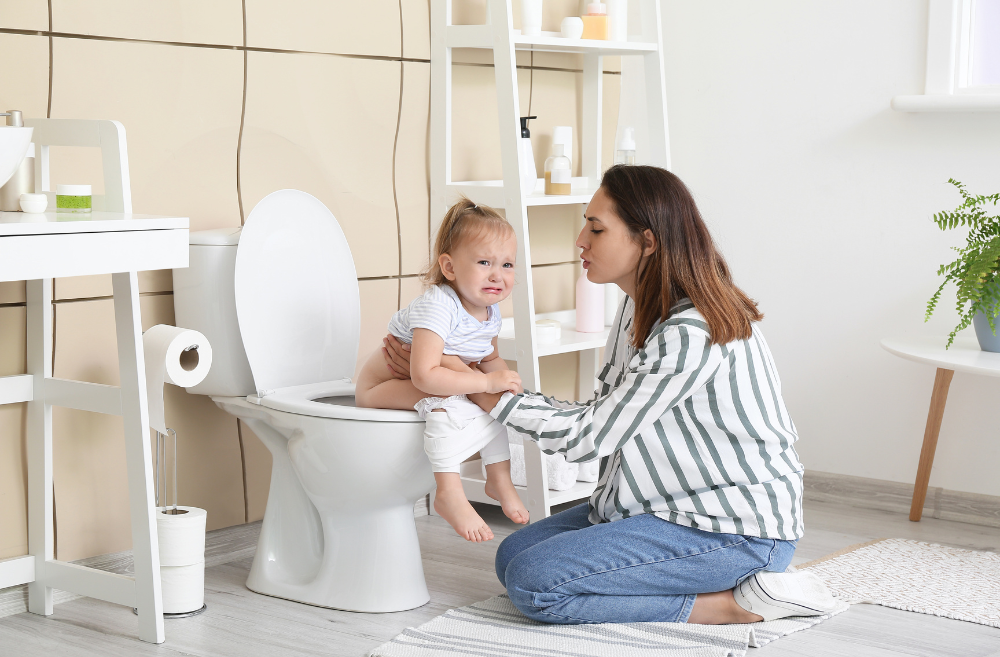For children with sensory processing disorders (SPD), public bathrooms can become a battleground of overwhelming sensations, especially when confronted with the loud sounds emitted by toilets, hand dryers, and the startling nature of automatic flushing toilets. These sensory challenges often heighten anxiety and discomfort, making a routine bathroom visit a distressing experience. Observable behaviors of overstimulation might include: covering ears, holding urine until home, crying, refusing, or bargaining when having to use a public restroom. Let’s delve deeper into these specific triggers and explore therapy-driven strategies to ease these difficulties for both children and their caregivers.
The Sensory Impact of Loud Noises in Public Bathrooms
1. Toilet Flushing Sounds: The sudden and thunderous noise produced by flushing toilets can be distressing for children with sensitive ears, triggering anxiety or sensory overload.
2. Hand Dryer Volume: The loud and forceful sound of hand dryers can overwhelm auditory sensitivities, causing discomfort or panic in children with sensory challenges.
The Startling Nature of Automatic Flushing Toilets
Automatic flushing toilets, designed for convenience, can be particularly alarming for kids with SPD due to their unexpected and unpredictable nature:
1. Unpredictable Flushing: The automatic sensors can flush unexpectedly, startling children and causing distress or fear during bathroom use.
2. Heightened Anxiety: The uncertainty of when the toilet might flush can lead to increased anxiety and reluctance to use public bathroom facilities.
Therapeutic Approaches to Alleviate Sensory Discomfort
Strategies for Loud Noises
1. Noise Reduction Tools: Equip your child with noise-canceling headphones or earplugs specifically designed to minimize the impact of loud sounds in public bathrooms.
2. Gradual Exposure in Therapy: Work with therapists to gradually expose your child to recorded or simulated toilet flushing and hand dryer sounds in a controlled therapy setting to desensitize their auditory response.
3. Utilizing the Family Bathroom: This offers a more controlled environment where there is just one flushing toilet as opposed to the unpredictable flushing that occurs in multiple stalls.
Addressing Automatic Flushing Toilets
1. Preparation Techniques: Use visual aids or social stories to prepare your child for the possibility of automatic toilet flushing, explaining how they work and what to expect.
2. Manual Override Options: Teach your child to cover the sensor with toilet paper or use manual flushing options available in some public restrooms to give them a sense of control.
Parent and Caregiver Support
1. Calming Techniques: Practice deep breathing or relaxation techniques with your child to manage anxiety triggered by sudden noises or unexpected events in public bathrooms.
2. Advocacy and Communication: Advocate for accommodations with restroom attendants or managers, requesting alternative flushing options or quieter hand dryers in certain stalls to support children with sensory sensitivities.
Empowering Comfort in Public Bathrooms
By recognizing the impact of loud noises and automatic flushing toilets on children with sensory processing disorders, and employing therapy-derived strategies and parental support, caregivers can significantly alleviate their child’s distress during bathroom visits. Encouraging gradual exposure, offering comfort tools, and advocating for accommodations can transform public bathroom experiences into more manageable and less distressing situations for both children and their caregivers.
Pediatric therapy clinics, such as Red Door Pediatric Therapy in Beulah, Minot, Bismarck, Fargo and Grand Forks, North Dakota, specializing in speech, occupational, and physical therapy can play a pivotal role in guiding families with tailored strategies and support to help children navigate these sensory challenges successfully. Together, let’s create a more inclusive and supportive environment, ensuring all children feel comfortable and confident in public bathroom spaces.

